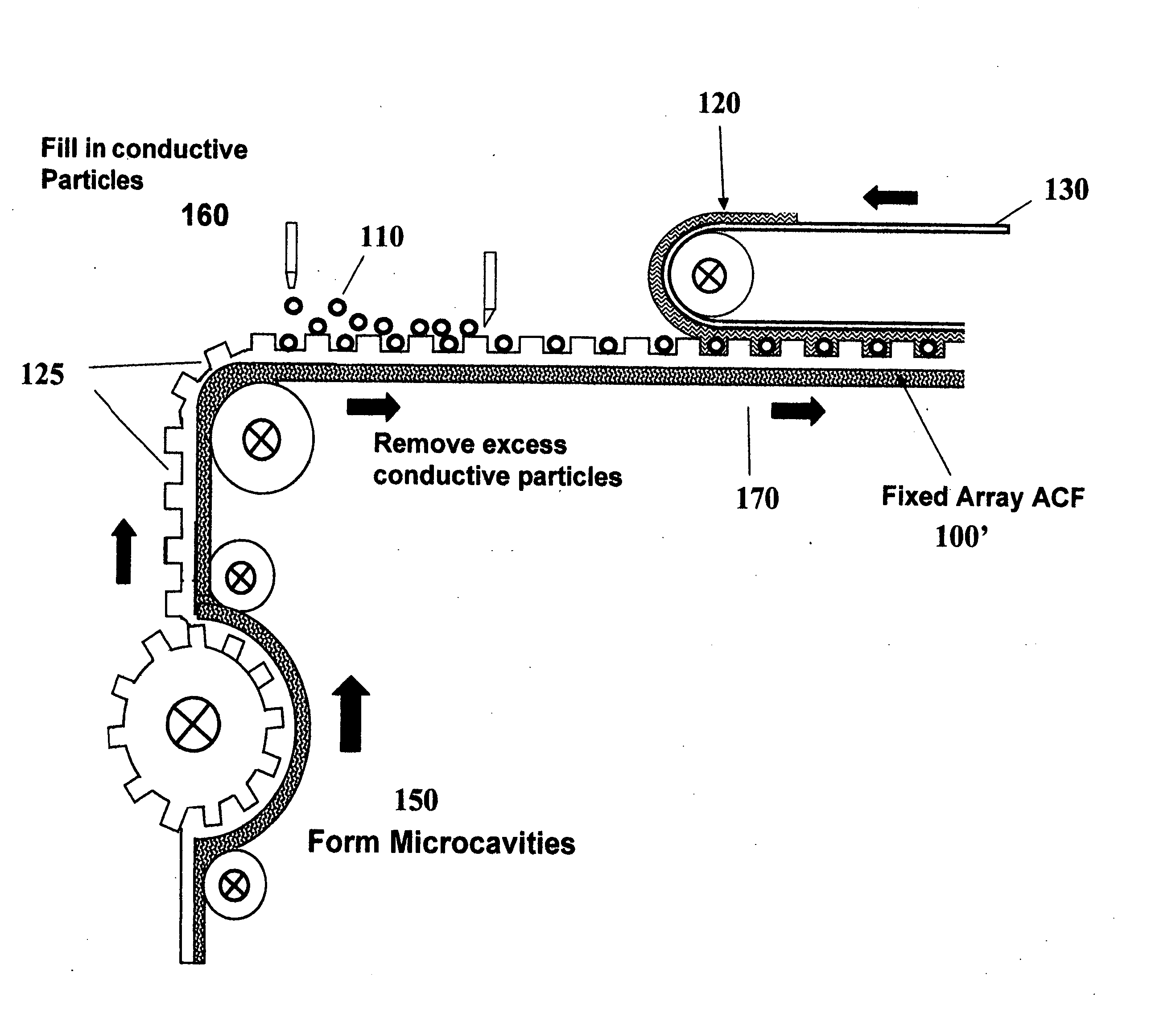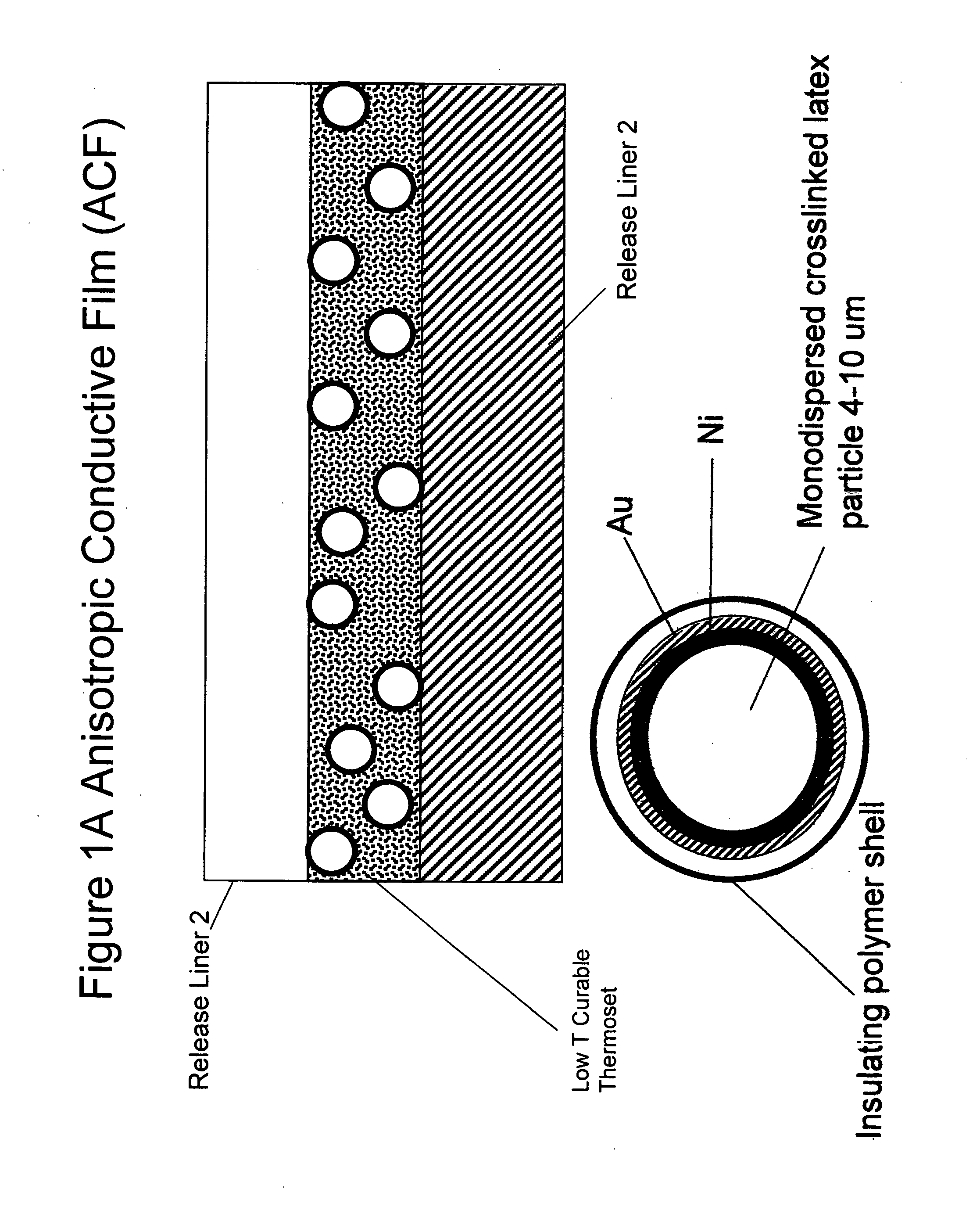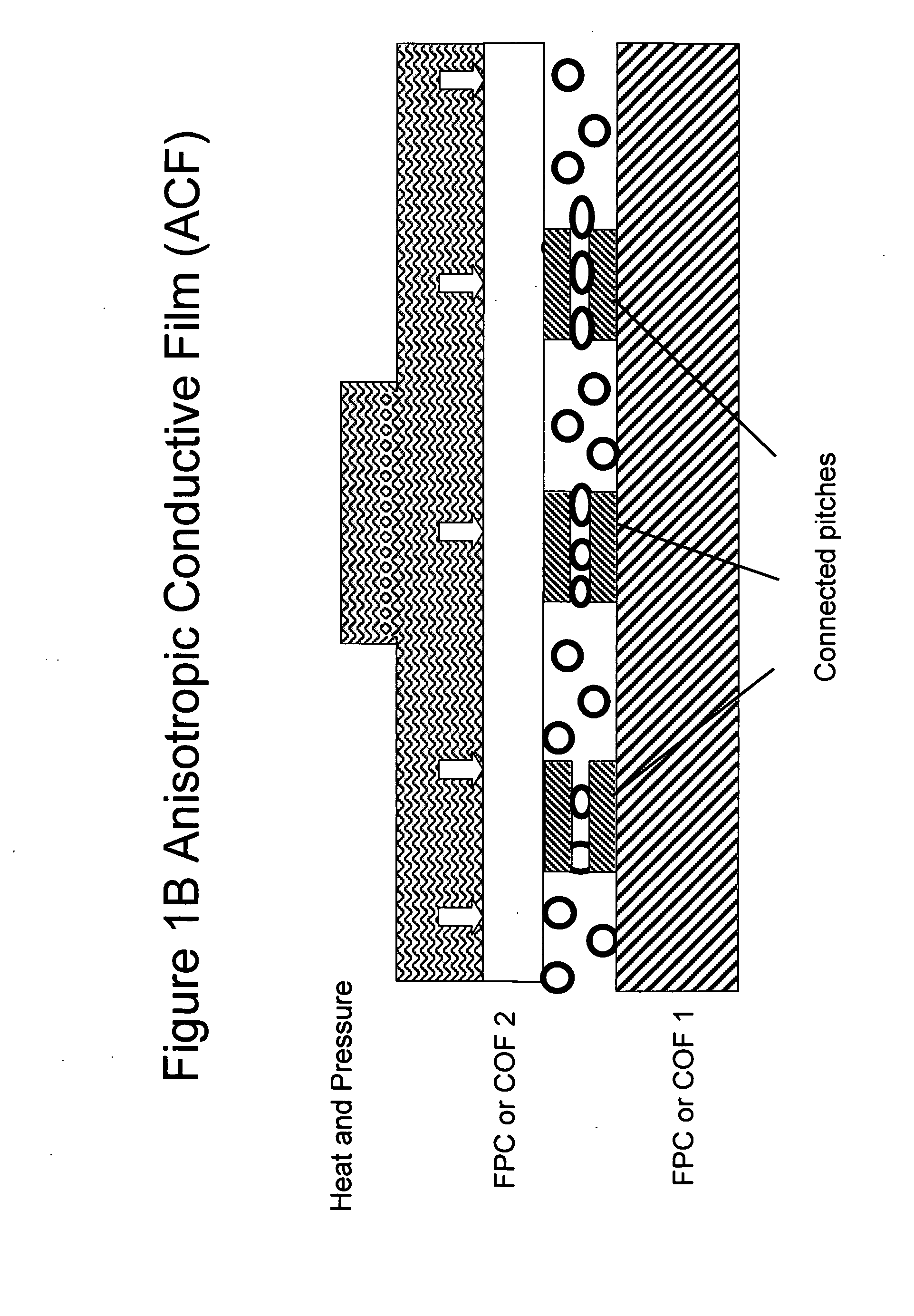Non-random array anisotropic conductive film (ACF) and manufacturing processes
a manufacturing process and anisotropic conductive film technology, applied in the direction of coupling device connection, transportation and packaging, chip-on-glass, z-axis conductive adhesive film (zaf), etc., can solve the problems of several major technical difficulties and limitations, and achieve the effect of reducing manufacturing costs and improving resolution
- Summary
- Abstract
- Description
- Claims
- Application Information
AI Technical Summary
Benefits of technology
Problems solved by technology
Method used
Image
Examples
examples
[0088] The following examples are given to enable those skilled in the art to understand the present invention more clearly and to practice it. They should not be construed as the limits of the present invention, but should be considered as illustrative and representative examples. For the demonstration of the particle filling and transfer, two types of commercially available conductive particles (110) were used: the Ni / Au particles from Nippon Chemical through its distributor, JCI USA, in New York, a subsidiary of Nippon Chemical Industrial Co., Ltd., White Plains, N.Y. and the Ni particles from Inco Special Products, Wyckoff, N.J.
Generation of Microcavity Array Pattern on Polyimide Film by Laser Ablation
[0089] Two types of microcavity arrays were produced on letter size 8.5″×11″, 3-mil heat stabilized polyimide film (PI, 300 VN from Du Pont.) The targeted dimension of the microcavities was 6 um (diameter)×2.0 um (partition)×4 um (depth) and 6 um (diameter)×2.7 um (partition)×4 u...
PUM
 Login to View More
Login to View More Abstract
Description
Claims
Application Information
 Login to View More
Login to View More - R&D
- Intellectual Property
- Life Sciences
- Materials
- Tech Scout
- Unparalleled Data Quality
- Higher Quality Content
- 60% Fewer Hallucinations
Browse by: Latest US Patents, China's latest patents, Technical Efficacy Thesaurus, Application Domain, Technology Topic, Popular Technical Reports.
© 2025 PatSnap. All rights reserved.Legal|Privacy policy|Modern Slavery Act Transparency Statement|Sitemap|About US| Contact US: help@patsnap.com



